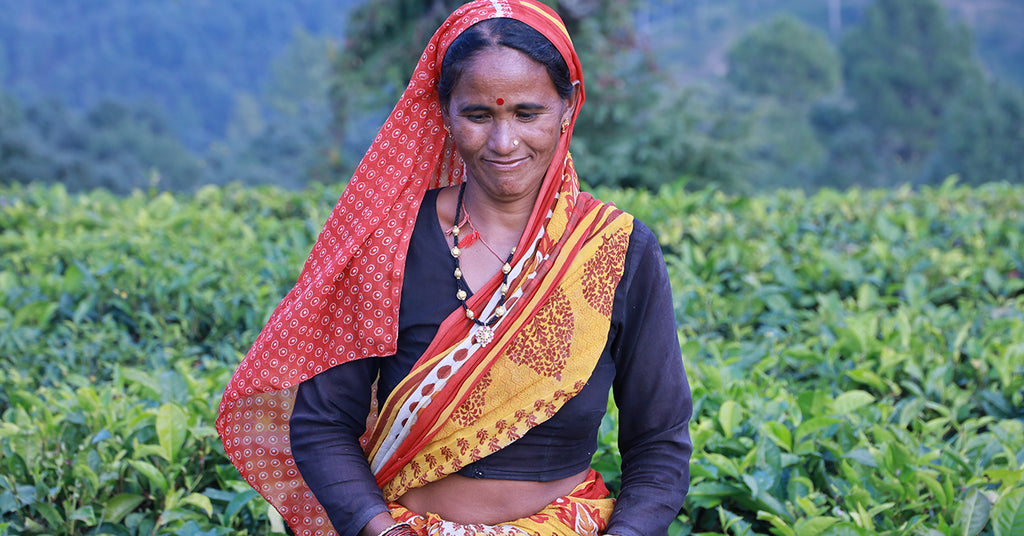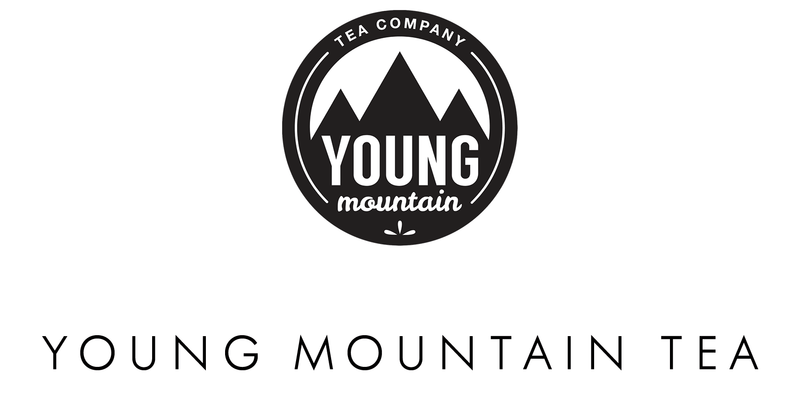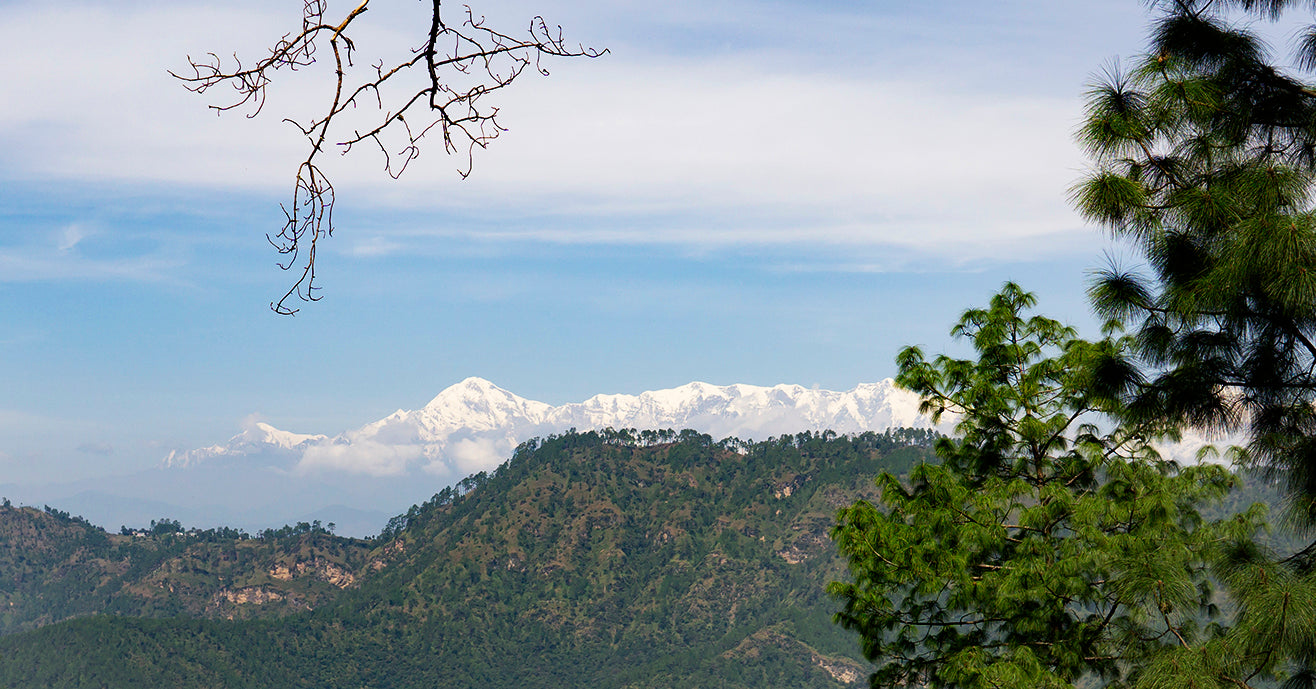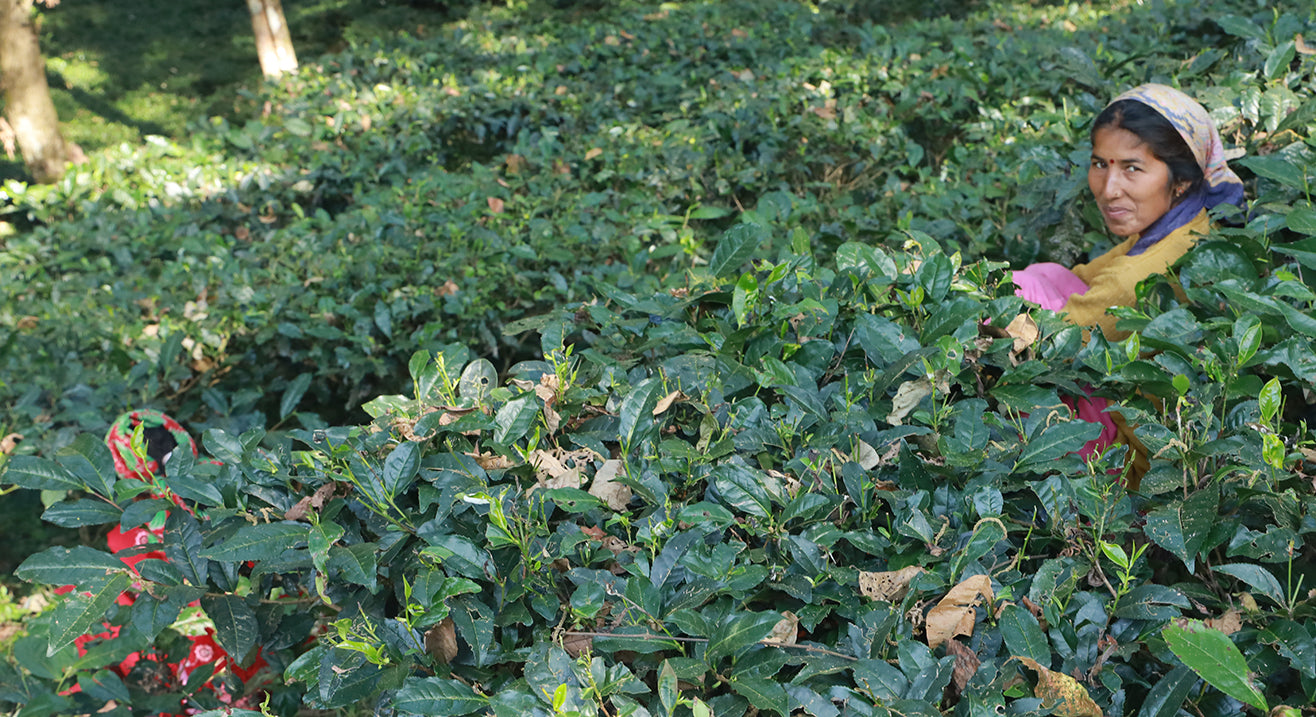Cultivating Kumaon

We drive down a narrow roadway that winds around conifer-covered mountains. After eight hours in a black, Mahindra SUV—first navigating hectic traffic in Delhi, then climbing up dusty roads in various stages of completion, and now navigating the bumpiest of dirt tracks in rural, northern India—I can’t wait to arrive at our destination: Kumaon. This relatively unknown tea region is nestled in the Himalayan foothills west of Nepal’s border.
I’m in the passenger’s seat. On the driver’s side sits Desmond Birkbeck, my friend and Young Mountain Tea’s tea making partner in the region. He’s a master multitasker, honking at every blind curve to warn oncoming traffic of our approach while constantly making and receiving calls through his Bluetooth headset. I’m amazed there’s cell reception—albeit spotty at best—in this remote region that’s far from India’s commercial centers. Mobile phones weren’t of much use here back in 2015, when I first met Desmond.
“Acha cha cha cha,” he says loudly through the phone. “Teek hai, teek hai, teek hai.” These are Hindi phrases both meaning something akin to “okay,” and Desmond uses them a lot during our road trip.
In non-COVID times, I spend a week in Desmond’s home twice a year—first in April at the beginning of the tea season, and again in October at the season’s end. He and his family are incredible hosts, running a homestead where they grow their own food, make their own cheese, and even raise the meat they eat. We feast on goat biryani, egg curry, and sautéed radish greens topped with paneer. For breakfast: cream (just milked from their cow that morning), apricot jam, and freshly fried puri. And, of course, black tea. Everything is grown and crafted on their small family farm.
The History of Kumaon Tea
If you ask locals, they’ll tell you that Kumaon (pronounced “coo-MAW,” with a silent “n”) is a “newly” settled part of India, with the first non-nomadic residents being documented as “recently” as the 1400s. One prominent theory holds that the first inhabitants were fleeing religious persecution from Mughal invaders entering the subcontinent in present day Pakistan. The area was included within the bounds of the Gorkha Kingdom in the mid-16th century. By that time, its independent, self-reliant population had carved out terraces from the mountainsides to support their subsistence lifestyle.
The first records of tea cultivation in Kumaon date back to the 1830s, when the British East India Company was searching for places to grow tea on the Indian subcontinent with the hope of circumventing trade with China. Drawn to Kumaon’s acidic, well-drained soils, the company imported Chinese seeds and established test plots on the rugged hillsides. Camellia sinensis took well to Kumaon’s soil, and the plant thrived there (more than 15 years before Robert Fortune’s legendary stolen saplings reached India’s shores).
While Kumaon tea was well-received in Europe, the region’s success was hindered by its distance from seaports. Kumaon was located hundreds of miles from the coastal British capital in Kolkata. Getting tea out of the mountains and onto ships required roads and a supply chain network that didn’t yet exist. Rather than pressing for such infrastructure, strong lobbies of growers focused instead on developing tea plantations closer to Kolkata’s ports—Assam and Darjeeling—regions that are now household names across the globe.
By the 1920s, the experimental plots in Kumaon were essentially abandoned, although the hardy tea bushes continued to grow wild. About a decade later, a group of six British families living on the island of Sri Lanka moved to Kumaon to revitalize its gardens. Enticed by the prospect of owning land (something unattainable on their home island), they immigrated, sight unseen, to steward these untamed shrubs. Most of those families eventually moved away, except for one—the Birkbecks.
In the 1990s, the state government was seeking ways to create more economic opportunities in rural areas. After considering several other crops, the government settled on tea because of its resilient nature and also because it is “primate-proof.” Government officials say that because tea plants do not bear fruit, monkeys don’t raid them the way they do so many other crops, and that this factor was crucial to winning state support to renew the neglected industry. The program initially focused on cultivation, covering all startup costs for farmers committed to growing tea. Officials had hoped private industry would set up factories to process the farmer’s harvest. When this didn’t come to fruition, the government established factories to turn the green leaf into finished tea. Today, the public sector continues to lease the farmers land, guaranteeing growers a steady income that is five times higher than the average tea worker wage in India.
Small Farms & Growing Demand
Today, Kumaon’s tea is grown on small-scale farms, a stark contrast to the large plantations that dominate India’s landscape. Kumaon has a burgeoning farming community, thanks, in part, to our customers buying up its flavorful whole-leaf teas!
When I ask Desmond about the impact of our work together, he puts it like this: “In our village, we were looking for a market for our tea. Young Mountain Tea has provided that connection with the outside world to market this tea and bring it to an international level of recognition.”
More than 2,000 Kumaoni households now produce 120,000 pounds of tea annually on small-scale farms.
Tea is not new to Desmond. He is the grandson of one of the six British families who moved to Kumaon in the 1930s. Desmond wrote a letter to the Tea Board of India when he was just 14 years old, requesting his family’s tea garden, Chirrapani, be granted the status that would allow it to sell in auctions. He earned a master’s degree in biochemistry in the early 1990s and considered moving to the US for a job offer. On the verge of what many in India would consider an opportunity of a lifetime, he instead decided his heart was in tea. So he moved back to Chirrapani and dedicated his life to reviving Kumaon’s historic crop. He now helps communities throughout the state start new tea growing ventures, and he manages the government factory in his hometown.
He also oversees the largest nursery in the region, his brainchild. Its 600,000 saplings are fueling this unique subset of the tea industry, as the saplings are planted not just on his family’s certified organic tea garden but across the region as well.
The Young Mountain Tea-Kumaon Connection
My tea journey began in Kumaon, a place I’d been visiting off and on for four years before Young Mountain Tea’s inception. My first visit was in 2009, and I immediately fell for the region—its sparsely populated, rugged Himalayan mountains had a purity and sense of adventure that captivated me. At that time, I was working on renewable energy projects tied to creating local livelihoods in Kumaon, but I was growing less interested in engineering and longed for a way to stay connected to this region I’d grown to love. In 2013, I received a Fulbright Fellowship, which gave me the chance to return to Kumaon but with a new focus: figuring out my next career move. While traveling there on the back of my friend’s motorcycle, I saw that tea was thriving on a small scale. But I also saw a plethora of fallow fields and heard about young adults leaving rural villages in droves for India’s urban centers. I wondered if tea could be used as a means for establishing sustainable rural livelihoods that would give youth a reason to stay.
As I studied the industry further and traveled to Darjeeling and the Nilgiris, it became clear that the Indian tea industry was ripe for reinvention. There was space for a new model, one in which farmers were the owners and quality was more important than quantity. Motivated by this realization, I moved back to Oregon and established Young Mountain Tea to develop a market that could raise up emerging tea makers, creating vibrant mountain economies and healthy lands—and to introduce Kumaon teas to the world.
I had partnered with a nonprofit to grow the first batch of Kumaon teas that Young Mountain Tea would import. I ran a Kickstarter campaign to raise the funds to buy it, traveled back to Kumaon, and then learned that the crop had failed. I was desperate. And in that moment, through a string of contacts, I was introduced to Desmond. He was an anomaly in the area for many reasons, but especially for possessing a graduate degree in a community where even a formal elementary school education is uncommon. I hoped that together we could launch Kumaon tea in the US with a high-quality white peony, one of my favorite varieties. Yet Desmond had never heard of white peony tea. I had brought along a sample from my favorite Oregon tea shop and handed it to him. Desmond crushed the leaves in his hands, deeply inhaled, and said, “If this is what you want, I can make it.”
That was May 2015, and we’ve been working together ever since. Our Organic Kumaon White was inspired by Desmond’s first experience with white peony. Now it’s one of the most popular teas in our collection, and as I write this, the first full container load is on its way here. The white tea’s arrival into the US marks a milestone for Kumaon and a clear demonstration of growing demand for its teas.
I think of this chapter we are helping to write in the long, rich history of Kumaon tea as one of the most exciting parts of our work. Our connection with these growers is helping to ensure that this turbulent story of colonialism, family, and modern politics will ultimately result in a happy, even triumphant, ending. When I’m in Desmond’s home, playing checkers with his sons and drinking the tea harvested from just outside their kitchen, I feel an almost mystical connection to the plants that have grown here for nearly two centuries. If we can channel the tenacity of this hardy, strongly rooted crop, we will cultivate a more vital way forward for these Himalayan communities for generations to come.
Modified from an article originally published March 28, 2018 in Fresh Cup Magazine.
Want to Learn More About Our Teas’ Origins?
READ ABOUT OUR TEA PARTNERS IN SOUTHERN INDIA'S NILGIRIS
You might also enjoy:
Blog Author:

Raj Vable, Founder
He has been confounded by the leaf since his first transcendental encounter with white tea in 2010. Three years later, he started Young Mountain Tea to bridge his budding tea obsession with his interest in traveling in the mountains and previous experience creating job opportunities in rural India. He revels in working across cultures and can be regularly found trying to get the rest of the team on board with another outlandish tea project. His favorite teas remain white, and he’s always searching for the next cup of magic.







Comments on this post (2)
This article read like a novel; so compelling. That Desmond was there and just who you needed to help succeed! So wonderful what you have done for Kumaon, I am grateful Young Mountain Tea succeeded.
After trying my first cup of white tea; Kumaon White, I bought every bag we had of it at Market of Choice. Having grown up with an English mother tea was integral to my childhood but only hearty black Assam. Young Mountain Tea has opened a whole new world of tea enjoyment.
— Wendy E King
Welcome to the Northwest. There are tea enthusiasts here. We drink high quality white tea every day. Sometimes silver needle. Sometime white peony(Pai Mutan)
— Gary Patterson